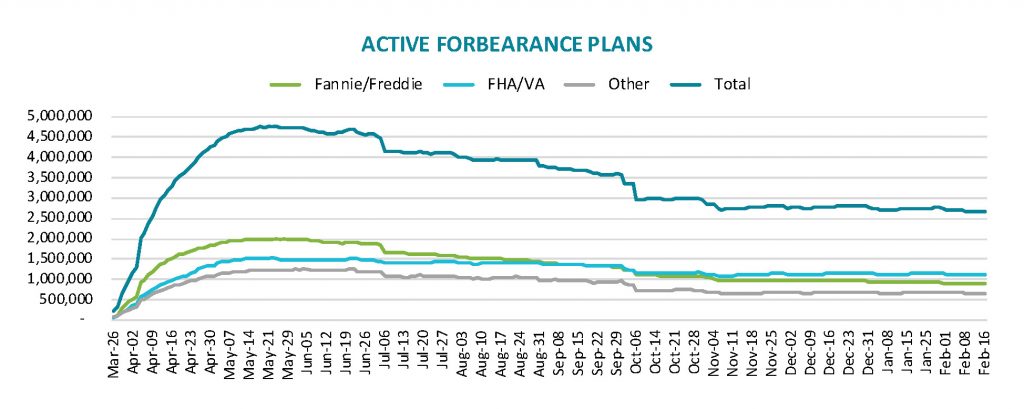 Black Knight has released the results of its latest McDash Flash Forbearance Tracker [1], finding that the trend of mid-month forbearance increases continues to rise.
Black Knight has released the results of its latest McDash Flash Forbearance Tracker [1], finding that the trend of mid-month forbearance increases continues to rise.
Black Knight has found that the number of active forbearance plans increased by 15,000, a 0.6% rise over last week, with portfolio-held and privately securitized mortgages accounting for the largest weekly increase at 12,000 (1.8%). FHA/VA forbearances saw an increase of 5,000 (0.4%), while the GSEs experienced slight improvement, with a decrease of 2,000 forbearance plans (-0.2%).
As of Feb. 16, 2.69 million U.S. homeowners remain in forbearance, with 9.2% of that number representing FHA/VA mortgages, 3.2% GSE mortgages, and 5.1% portfolio/privately securitized mortgages.
As Black Knight’s Andy Walden [2] notes, with the month of February coming to a close, nearly 204,000 forbearance plans are scheduled to expire, suggesting that any decline in forbearance volumes in the coming weeks is likely to be limited.

Despite the weekly increases, the overall monthly rate of decline held steady at -2% month-over-month. This continues the trend of very slow, but consistent, improvement in the number of outstanding forbearance cases. New plan starts hit a post-pandemic low this week, while just one of every 77 homeowners who entered the week in forbearance left their plans.
Should the federal government not take any further action to assist struggling U.S. homeowners, more than 600,000 seriously delinquent borrowers will reach the end of their allotted forbearance periods [3] at the end of March.
“The vast majority of plans have a 12-month cap on payment forbearance, and the various moratoriums which have kept foreclosure actions at bay over the past 10 months may be lulling us into a false sense of security about the scope of the post-forbearance problem we will need to confront come the end of March,” said Black Knight Data & Analytics President Ben Graboske in an earlier release. “Last year saw the largest number of homeowners—nearly 3.6 million—become 90 or more days past due since 2009, and as of the end of December, 2.1 million remained so.”
